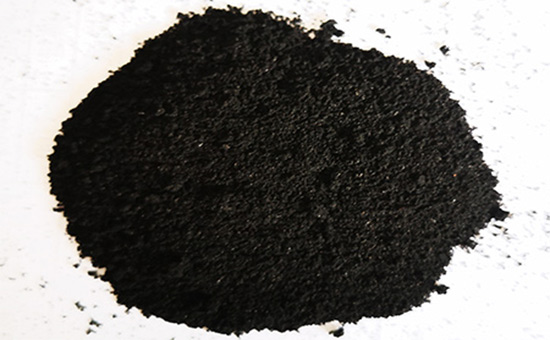
The application of rubber in conveyor belts is not limited to conveyor belt cover rubber, and an appropriate amount of fine rubber powder or activated rubber powder can also be added in the production of other rubber layers. Rubber powder can not only be used as the main rubber material in the production of belts for different purposes such as transmission belts, but also can be filled into the belt in the form of fillers to reduce the cost of raw materials. In actual production, how is rubber powder used in rubber V-belts and automotive V-belts? The editor continues to discuss with you today.
3. Rubber V-belt
Rubber V-belt generally refers to the V-belt, which is mainly used for the transmission of force and mechanical equipment for the transportation of goods. It has the advantages of small footprint, high transmission efficiency, low noise, and easy installation during use. Ordinary rubber V-belt 2YLYY716 mainly includes fabric covering rubber, cord fabric rubber, compression layer, etc. Different rubber layers have different requirements for the physical properties of the rubber materials used. Therefore, when mixing rubber powder to reduce the production cost of the V-belt, the specifications and dosage of the rubber powder in each rubber layer are different.
Ordinary rubber triangle belts are mostly processed from natural rubber and styrene butadiene rubber. When preparing cloth covering rubber, natural rubber and styrene-butadiene rubber are usually added at a ratio of 40:60; natural rubber and styrene-butadiene rubber in cord rubber are recommended to be used together at a ratio of 50:50; the amount of styrene-butadiene rubber in compression layer rubber is larger. Natural rubber and styrene butadiene rubber are mostly added in a ratio of 30:70. In actual production, it is recommended to use activated rubber powder in each adhesive layer of the V-belt, and the dosage should be controlled 20 parts.
4. Car V belt
Automobile V-belts belong to a large category of rubber V-belts, which mainly include compression layer, stretch layer, cord dipping and cloth covering rubber. Generally, natural rubber and styrene butadiene rubber are used as the main raw materials. The compression layer can be Add fine rubber powder or activated rubber powder in an appropriate amount. When the total amount of natural rubber/styrene butadiene rubber is 100 parts, 30-50 parts of rubber powder can be added, which effectively reduces the cost of raw materials and improves the process performance of the rubber. In actual production, it is recommended to put the fully masticated natural rubber, styrene butadiene rubber and rubber powder into the internal mixer and mix for a few minutes before adding the compounding agent.
The formula for the compressed layer of automobile V-belt mixed with rubber powder: 40 parts of natural rubber, 60 parts of styrene butadiene rubber, 30 parts of 60 mesh rubber powder, 3 parts of multifunctional additives PA, 2 parts of stearic acid, 5 parts of zinc oxide, Accelerator M 1.1 parts, Accelerator DM 1.5 parts, Accelerator TMTD 0.4 parts, Anti-aging agent D 1 part, Anti-aging agent DFC-34 1.5 parts, Coumarone 6 parts, Engine oil 6 parts, High wear-resistant carbon black 40 parts, 40 parts of semi-reinforcing carbon black, 50 parts of calcium carbonate, 30 parts of pottery clay, 2.5 parts of sulfur; total: 320 parts.
When using rubber powder to reduce the cost of various tape raw materials, rubber product manufacturers must choose appropriate fineness of vulcanized rubber powder or activated rubber powder, reasonably control the amount of reclaimed rubber, and further optimize product comprehensive indicators and service life while reducing costs.
Exclusive original article [commercial authorization] reprint, excerpt and excerpt in any form are prohibited without written authorization. Focus on Hongyun rubber: learn the process formula and raw material technology of producing rubber products from recycled rubber to help you reduce costs and increase profits